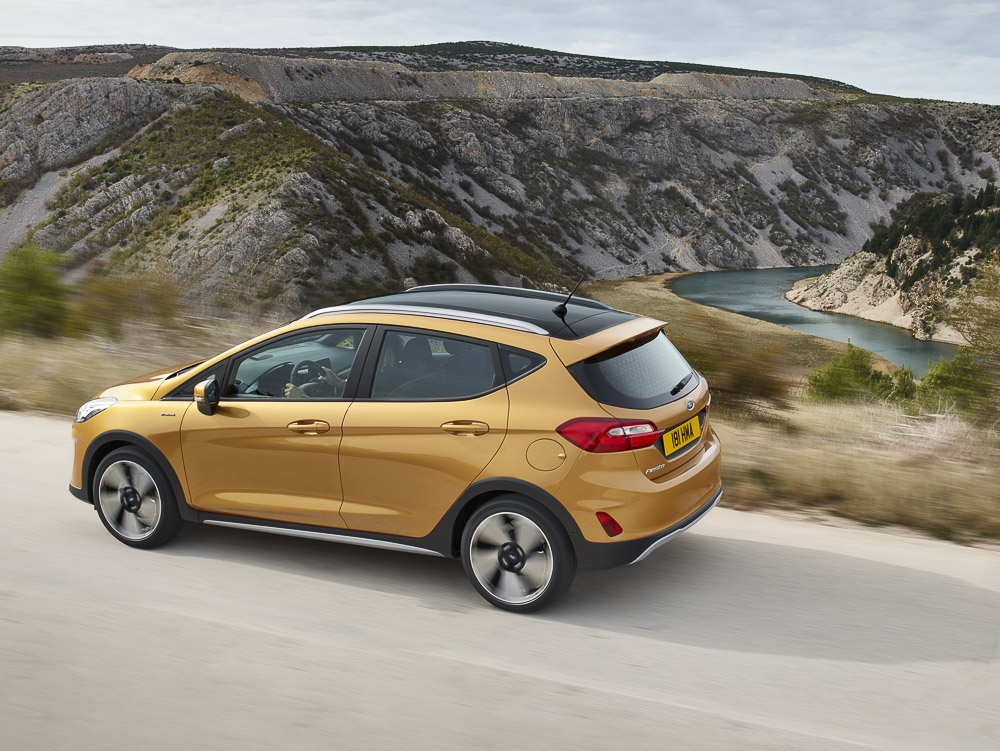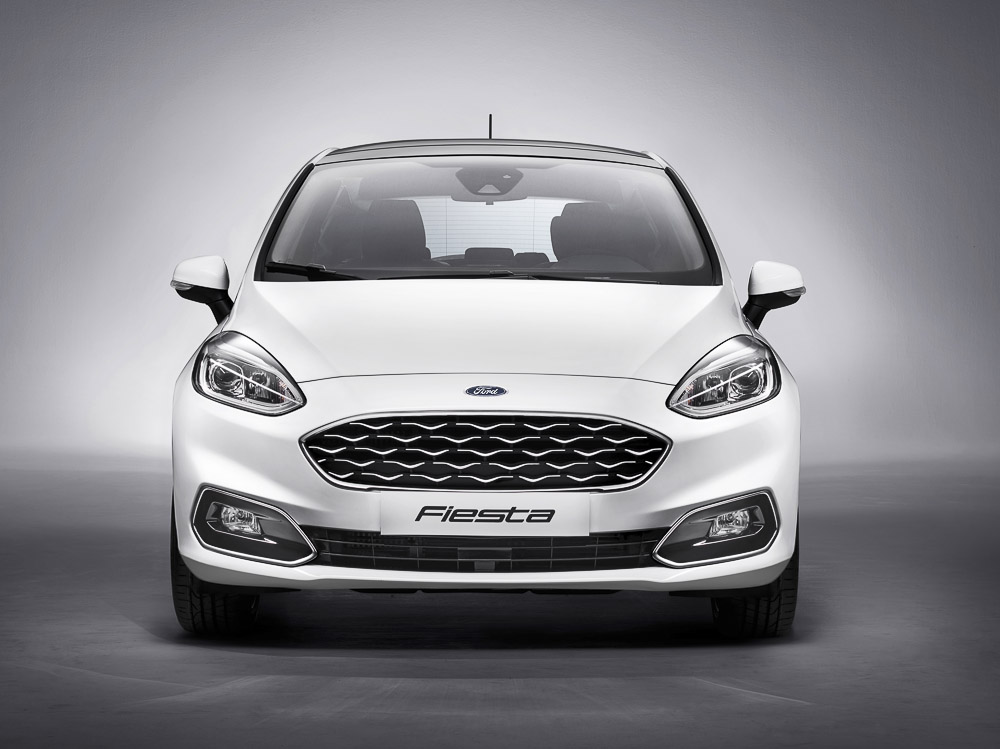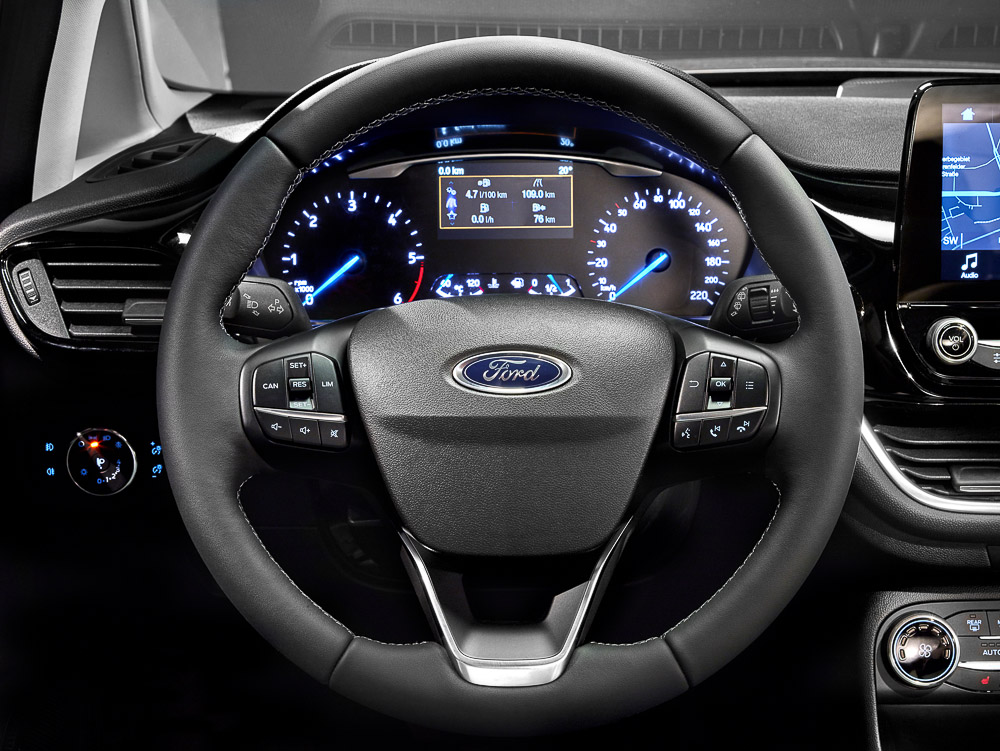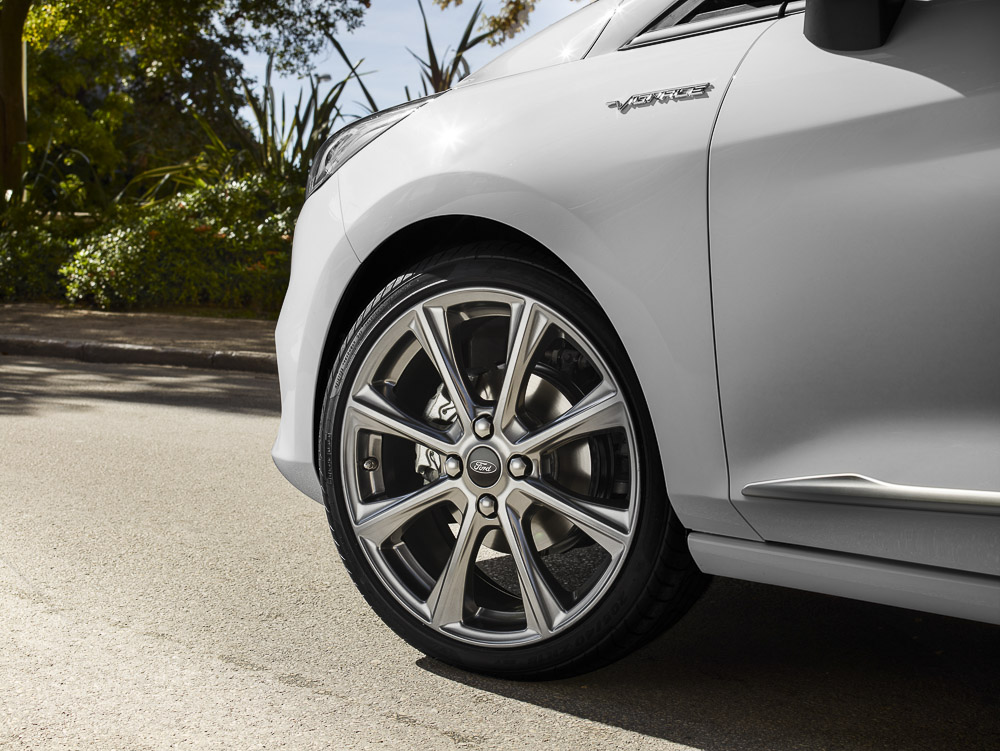
So this is it: the latest version of Britain’s best-selling car, the Ford Fiesta. The car that has moved 17 million copies since it launched in the mid-1970s.
This red one’s an ST-Line. It’s one of four variants Ford revealed at tonight’s glitzy launch event. Spoilers, skirts and sports suspension – expect the next ST-proper to look like this but more so.

Of course it’s Fiestas like the brown, five-door Titanium that most will buy. OK possibly not in brown. But those not-too-sporty mid-to-upper trims are where Ford does the bulk of its trade. And the claim is that it now shows a whole lot of higher technology and better quality.
Because the small-car market is diversifying, and because premium brands’ small-car sales rose 25 per cent in the past year alone, Ford also has Fiestas aimed at answering those questions. The chunky-looking one is called the Fiesta ‘Active’ – a pseudo-crossover with body-cladding, roof-rails and elevated ride-height. That’s set to join the line-up soon after launch. The white one is a super-posh Vignale, which isn’t only about the lux interior but a better ‘customer experience’ from the dealer at both sales and service time.
Available with three- or five-doors, the new Fiesta is appreciably bigger than the car it replaces. Inside, the old Fiesta’s interior was designed to ape a technology that, by the time it was released, didn’t really exist – a mobile phone with actual, physical buttons.
The new one gets a floating centre-screen (8in in these cars) running SYNC3 – the latest version of Ford’s much-maligned infotainment software. This time the screen is said to be far more responsive ‘with the highest resolution in the industry’. It runs greatly smarter voice-recognition abilities too. The screen setup cuts some 20 hard-buttons out of the old car’s total. The optional stereo is by B&O and has many watts.

Ford’s calling the Fiesta the “world’s most technologically advanced small car”. Sensors monitor the path ahead as far away as 130 metres for the collision mitigation system – that’s 20 times further than the old one. They can detect pedestrians as well as vehicles.
More sensors around the car give it myriad more ways to assist you. On the menu are – deep breath – blind-spot monitoring, lane-keeping assist (not just lane departure warning, note), blind-spot warning, cross-traffic warning when reversing, active parking with perpendicular capability, and adaptive cruise control. None of them new, but it’s a list that’s unique among superminis.
Most people will go for more expensive trim levels (top-spec Titanium accounts for nearly half of Fiestas sold so far this year), so even Style and Zetec are bound to be well equipped. Now Ford has the Ka+ to do its budget-bidding, it doesn’t need to cheapen the Fiesta.

Which is why the designers get very aerated about the quality of the cabin materials. The words ‘premium’, ‘upscale’ and ‘craftsmanship’ keep cropping up. The Vignale’s cabin features a double-stitched dash top, and the same piece is soft-touch on the rest of the range. A second smaller colour screen sits between the speedo and rev-counter.
The engine line-up is a familiar one, but improved. And that’s fine. Ford does good engines. There’s the 1.0-litre, three-cylinder EcoBoost with 100, 125 or 140PS (99, 123 or 138bhp). To save fuel, it features the world’s first cylinder deactivation on a three-cylinder. A 1.5-litre diesel comes in two versions, the ‘high-power’ one topping out 118bhp. The new entry-level motor is a 1.1-litre triple (so-long ancient 1.25). That engine gets a five-speed manual, while the EcoBoost gets a new manual gearbox, a six-speeder at last, or an auto.

The outgoing Fiesta is the best car in its class when it comes to the business of driving, years after its launch. Ford is candid that the new car is a ‘fine-tuned’ development, not an all-new start. The claim is that the new one delivers more grip (thanks to a wider track) and better steering feel. Disc brakes at the back mean, they say, the Fiesta can stop in similar distance to a 997-era 911.
But at the same time it’s said to be comfier. Ride quality is said to be better. So is refinement, to the point where Ford says it’s the quietest car in its class.
As to the design, the team says it “listened to the customers” who said they love the existing car. Course they do, they bought one. So the design of the new car hasn’t exactly shaken things up. But it’s a neat job, if in the case of the sill-extended ST-Line, a little porky looking in the flesh. That’s just our opinion. YMMV. It’ll go on sale next June. In the meantime, tell us what you think below.
